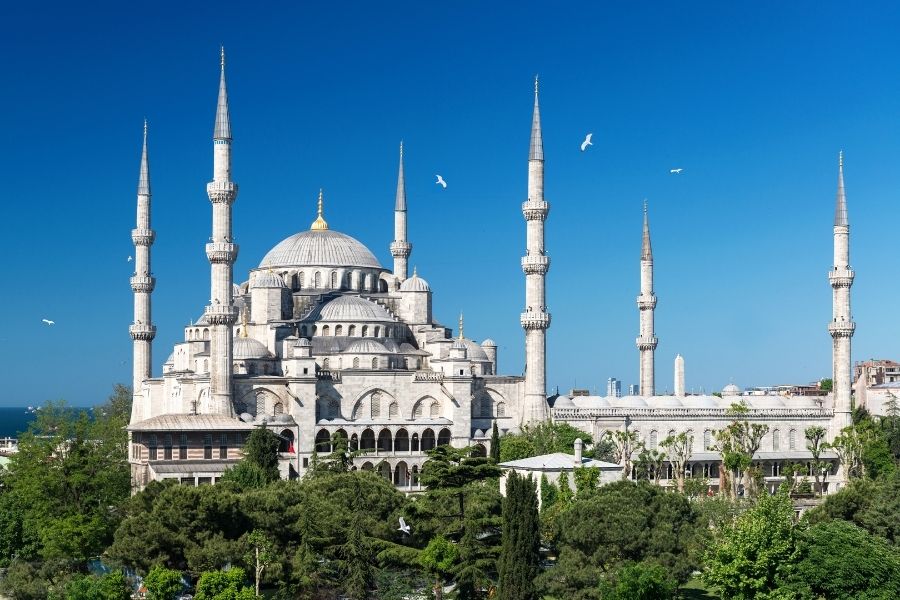Where legends intersect with reality, in the heart of Istanbul, a work of art ascends. With its six minarets piercing the azure sky, the Sultanahmet Mosque is etched into the silhouette of Istanbul and into the memories of its visitors. In this blog post, we will uncover the stories beneath this majestic structure, explore its architectural richness, and see how it has remained a miracle throughout the centuries.
This colossal structure reflects both the splendor of the Ottoman Empire and the refinement of Islamic architecture. The minarets shine under the rays of the sun during the daytime and take on a different beauty with the redness of the setting sun in the evening. The Blue Mosque is more than an architectural masterpiece, it has become a symbol that carries the spirit of the time. It is not only a religious place of worship, but also a shining star in the cultural mosaic of a city that has been home to many civilizations throughout history.
The Ottoman’s Fingers Touching the Sky
Istanbul is one of the world’s most ancient cities, whispering history at every turn, and the Sultanahmet Mosque is one of the most precious jewels in this historical mosaic. Construction began in 1609 during the peak of the Ottoman Empire, under the reign of Sultan Ahmet I. The mosque’s architect, Sedefkar Mehmet Ağa, is said to have interpreted the sultan’s request for “a minaret made of gold” as a directive to build six ribbed minarets due to a possible miscommunication, and thus this misunderstanding has made an unforgettable contribution to Istanbul’s skyline.
A Dance of Architecture: Balconies, Flutes, and Muqarnas
Each minaret, tall and slender, like a pen writing in the sky, captivates with its fluted design and conical caps. The four minarets that rise from each corner of the prayer space have six balconies each, while the two at the outer corners of the courtyard feature two balconies each. These balconies, known as şerefe, were used by the muezzin to project the call to prayer in all directions. Supported by delicately crafted muqarnas carvings, they stand as works of art reaching towards the heavens.
Between Legend and Architecture
The six minarets of the Sultanahmet Mosque are not merely architectural features; they are also reflections of the social and religious perspectives of the era. At the time of its construction, only the mosque at the Kaaba in Mecca featured six minarets, and the construction of the Sultanahmet Mosque with the same number initially sparked controversy. However, this controversy soon gave way to admiration, and the Sultanahmet Mosque has become one of Istanbul’s most iconic edifices.
The Muezzin’s Call to Prayer Journey
Even today, the narrow spiral staircases inside the minarets arouse curiosity and wonder in visitors. These stairs, once climbed five times a day by the muezzin for the call to prayer, now quietly bear only the echoes of the past.








